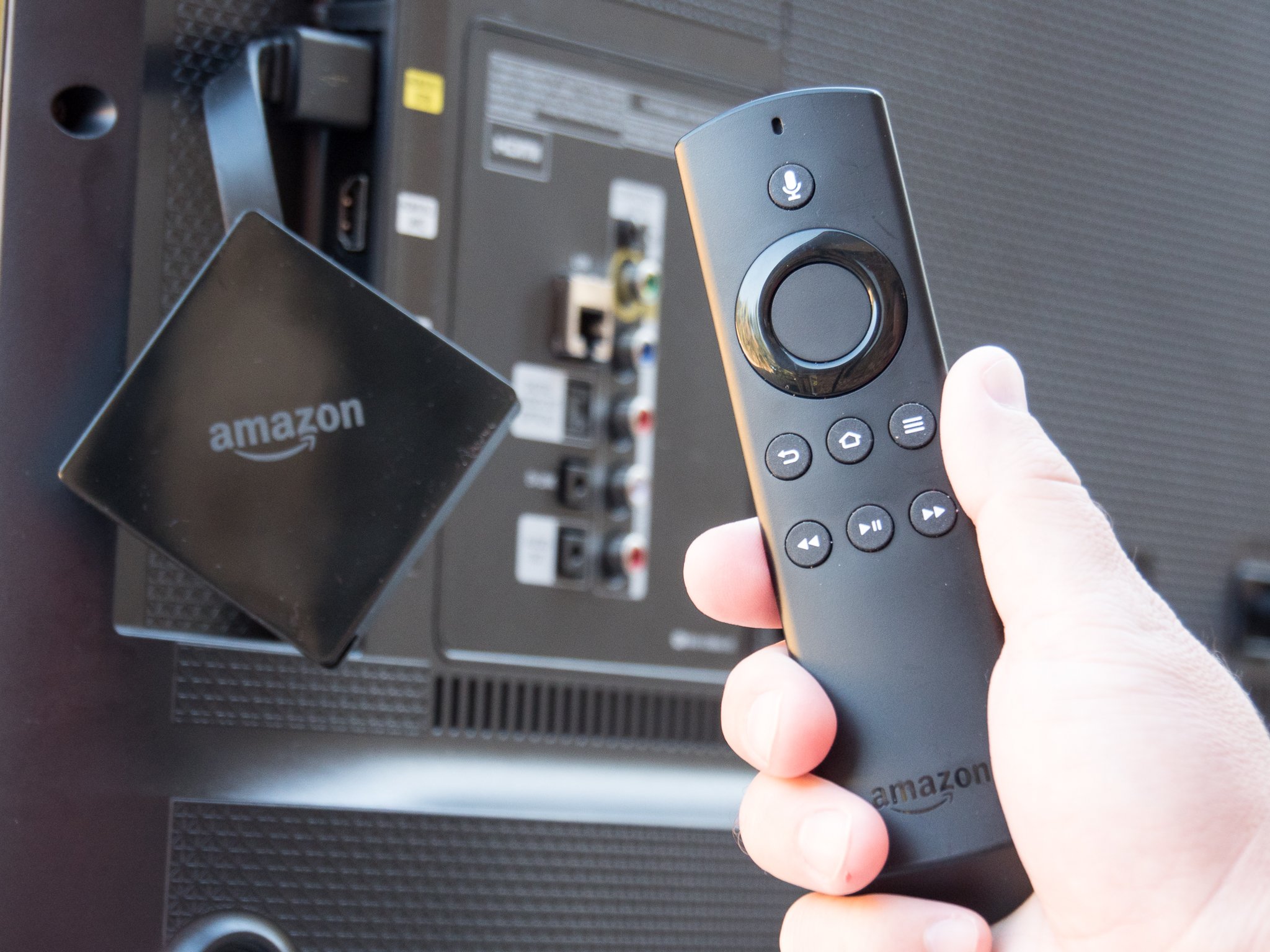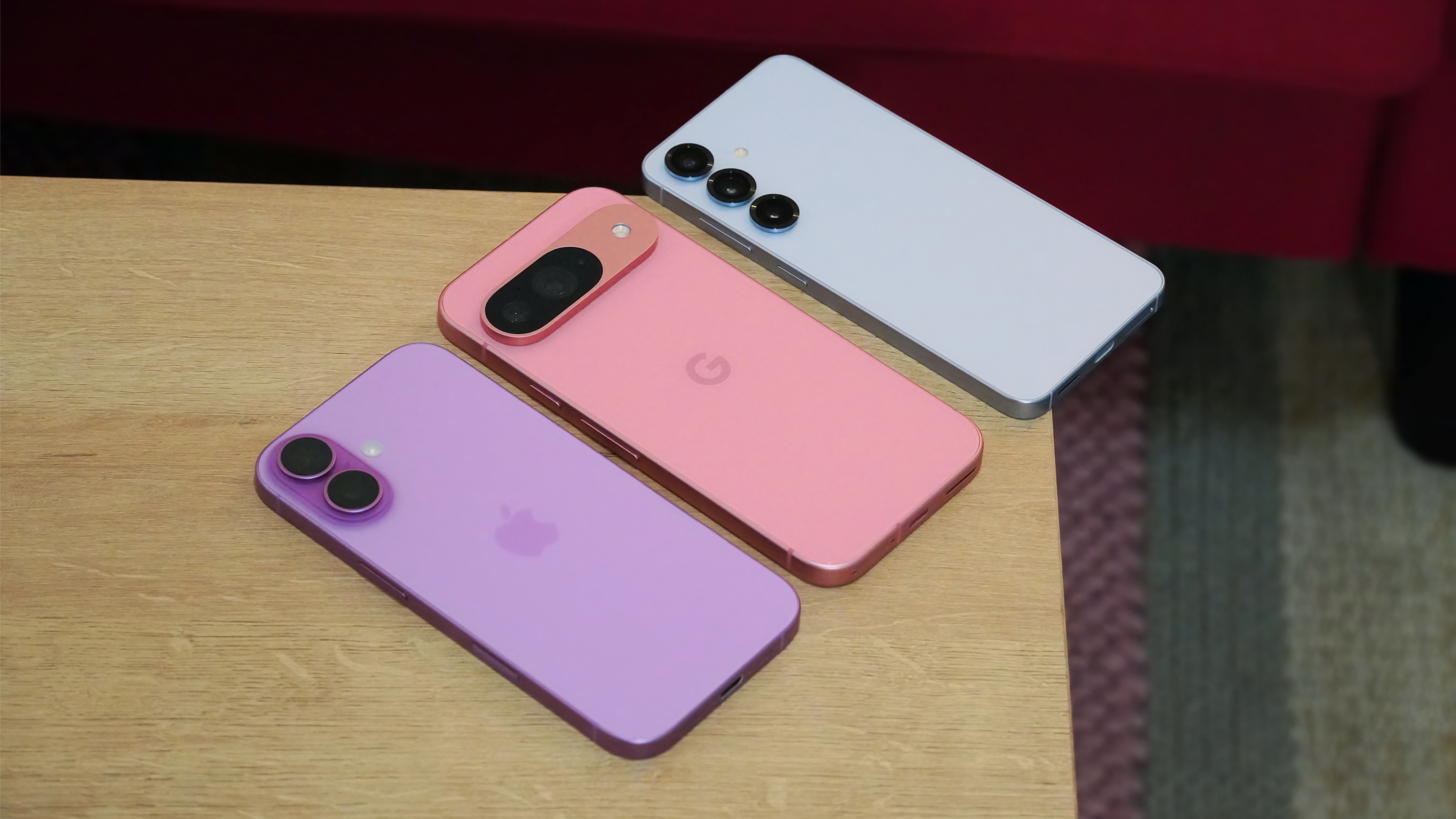At first glance, there's a lot to love about the new Amazon Fire TV. It's moved from a set-top box (and we really need to stop using that term given the thinness of most displays) to a dongle. It's added support for HDR10 along with the 4K we've enjoyed in the previous generation. And it gives you access to nearly every streaming service you could possible want. (At this point I'll cast an eye Apple's way.)
But trade-offs are a thing with the new Fire TV. Calling any product "imperfect" is a cliché, but it's also true. For as good as the Fire TV is, I've found a couple hiccups that stop me from recommending the inexpensive streamer — it's a mere $69 — outright.
Let's dive into it — the 2017 version of the Amazon Fire TV.
Watch this
Amazon Fire TV: Video review
Hardware matters
Amazon Fire TV: That dongle trade-off
The newest iteration of the Amazon Fire TV is either a decent leap forward or a bit of a step back, depending on your point of view. For those who care more about what's going on on the screen, you can look forward to HDR10 support, as well as an updated operating system.
The third-generation Fire TV is the first to run Fire OS 6, which is based off Android 7.1 Nougat. (That's a leap from Android 5.1 in previous generations.) That's mostly a bigger deal for developers than it will be for end users. The user interface looks pretty much the same — colorful and crowded — and apps work the same as they did before, for better or worse.
| Category | Spec |
|---|---|
| Form factor | HDMI dongle |
| Price | $69.99 |
| Max resolution | 4K (60Hz) at 60fps |
| Video | H.265, H.264, VP9, HDR10 |
| Audio | Dolby Atmos, Dolby Digital |
| Processor | Amlogic S905Z |
| GPU | Mali-450 MP3 |
| Storage | 8GB internal (~5GB available) |
| RAM | 2GB |
| Wifi | 802.11ac |
| Operating system | Fire OS 6.0 (based on Android 7.1.2 Nougat) |
But the upgrade to Android 7.1.2 means developers have some new toys to play with. Fire OS 6 now supports picture-in-picture — handy for those times you want to hop out of whatever it is you're watching to check out some other app. (How well individual apps will do this remains to be seen.) And it also supports recording and time shifting — that is, play/pause and fast forward/rewind. Now we just have to see someone actually take advantage of it.
Behind the television, you'll find a new form factor for the Fire TV. Gone is the streaming box, and instead you'll be joining that #donglelife. The new Fire TV is a small box with an HDMI plug hanging out of one corner and a Micro-USB port for power opposite it. And that's it.
And inside the new Fire TV you'll find, well, exactly what you'd expect. Hardware meant to stream video and not much else. In fact, this is where things have taken a little bit of a backward turn.
No more built-in Ethernet — you're left with the 802.11ac Wi-Fi. If you want Ethernet, you'll have to pony up $15 for an adapter. And no more expandable storage either. Amazon's shunned the microSD card and you'll have to make do with the built-in 8GB of storage. Disappointing? Sure. But remember that we're still expecting a beefier Fire TV box at some point.
So we've got a new operating system with PiP and recording and a new dongle instead of a box. The third top-line feature has to do with audio and video. For the former, Fire TV supports Dolby Atmos, which audiophiles sporting a 5.1 or 7.1 (or for the really hardcore, 7.1.4, with quad overhead speakers) system can take real advantage of. On the video side we now have HDR10. That's the open-source variant of HDR that most folks will tell you isn't as good as the proprietary (and licensed) Dolby Vision. Why Atmos and not Vision? The system-on-a-chip used by the new Fire TV supports the former but not the latter.
The technical stuff is one way to look at the new Fire TV. It's a dongle, not a box, with support for HDR 10 (but not Dolby Vision) and Dolby Atmos for audio. I'm generally less concerned by that and more with how it works. But it turns out in this case you can't ignore one fo the other.
For the most part this new Fire TV works pretty much exactly the same as the previous-generation Fire TV. The home screens look nearly identical. (If something's changed significantly, I haven't noticed.) Apps still work as they did before. The menus seem just a tag less laggy, which is always a good thing. But unless you're looking side by side as I've been it's pretty much as wash.
The remote control is nearly identical, too. It's just a tad taller, and the battery door fits a little differently, but that's it from an end-user perspective.
It's a Fire TV, period. Amazon's landed on a consistent experience in an interactive hardware update that checks a couple technical boxes it didn't before, while still leaving room for improvement.
And ya know what? That's not bad at all in a $69 box (erm, dongle) that does 4K and HDR. You get what you pay for here. For better or worse.
Using the Fire TV
Amazon Fire TV Software: Same as it ever was
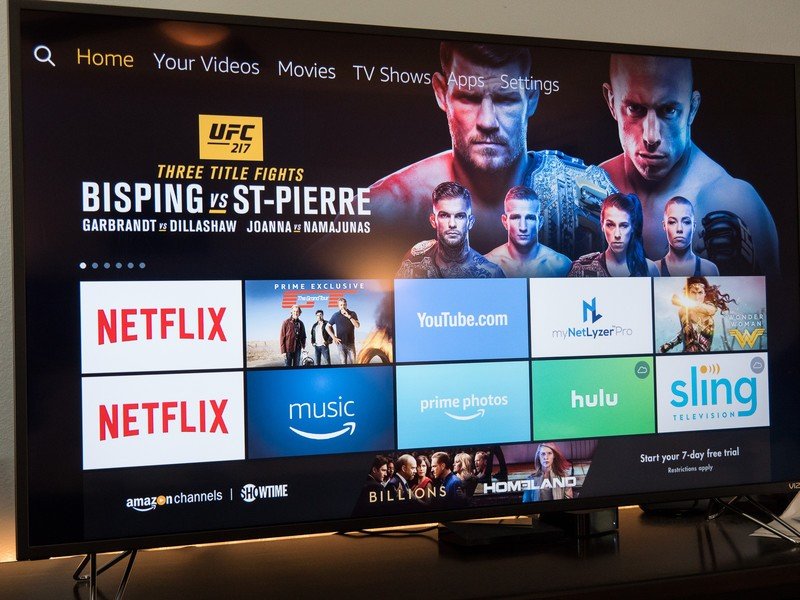
So what's it like to use? Amazon's user interface is still pretty good, though it's certainly on the busy side, bordering on messy. All of the apps I used before still work on this new version, and they work exactly the same way. (Though this is where I'll mention that the PlayStation Vue app is still ridiculously slow on Fire OS — much more so than on Android TV or Apple TV. Is that a platform thing? Or just the way the app is coded? I don't know.)
The real question for me is this: How into Amazon's services are you, and how much do you want to pay for streaming hardware? (And if you're a PS Vue customer, are you willing to put up with a laggy guide experience.)
If you're way into Amazon content, go for it. You've got movies and TV shows and Amazon Music and Prime Photos and all that in one easy-to-use place. And remember that the Movies Anywhere app works on Fire OS, so you've got access to any movies you've bought on Google or Vudu or Apple.
When it comes to 4K and HDR content, remember that it all comes down to source. That is, the source of your internet — speeds most certainly matter here — and the source of your content. Not everything is streamed natively in 4K. And there are plenty of shows that are in 4K resolution but not HDR. Amazon does a decent job of showing you what you're seeing. So will Netflix. (Remember, though that'll you'll need to have Netflix's most expensive plan.) Other services might not show you the stream quality. It's a crapshoot.
The short version is not everything will be true 4K, and not everything will be HDR. But when it's all firing on all cylinders, it looks pretty darn good — and again, in a hardware platform that's a mere $69.
Should You Buy It?
Yes, but ...
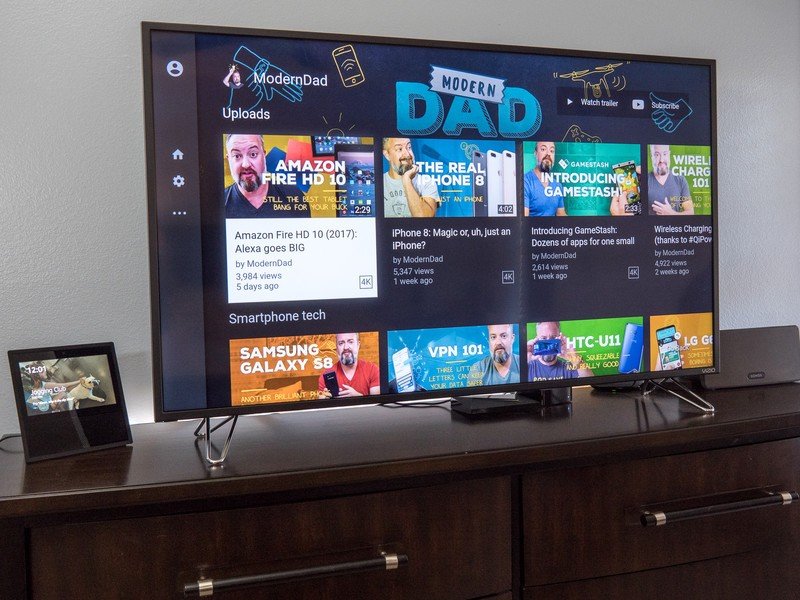
The Amazon Fire TV is definitely in the "Don't think, just buy it" category. Because you get a whole lot here in a $69 streaming device. If all you want to do is watch shows and maybe play around with a few apps and not worry that this isn't the fastest experience with all the bells and whistles, then go for it. The Fire TV ain't bad at all. And, actually, you do get a few bells and whistles, with 4K resolution and HDR10 and Dolby Atmos.
But if you just have to have Dolby Vision instead of HDR10, then you'll want to look elsewhere — either the new Apple TV (which is really good) or the NVIDIA Shield TV. If you want to have a better app experience, again, you might want to look elsewhere. (Especially if you rely on PlayStation Vue.)
The new Fire TV will stream content just fine. It just doesn't quite tick off all the boxes. But then again, it's only a $69 piece of hardware.
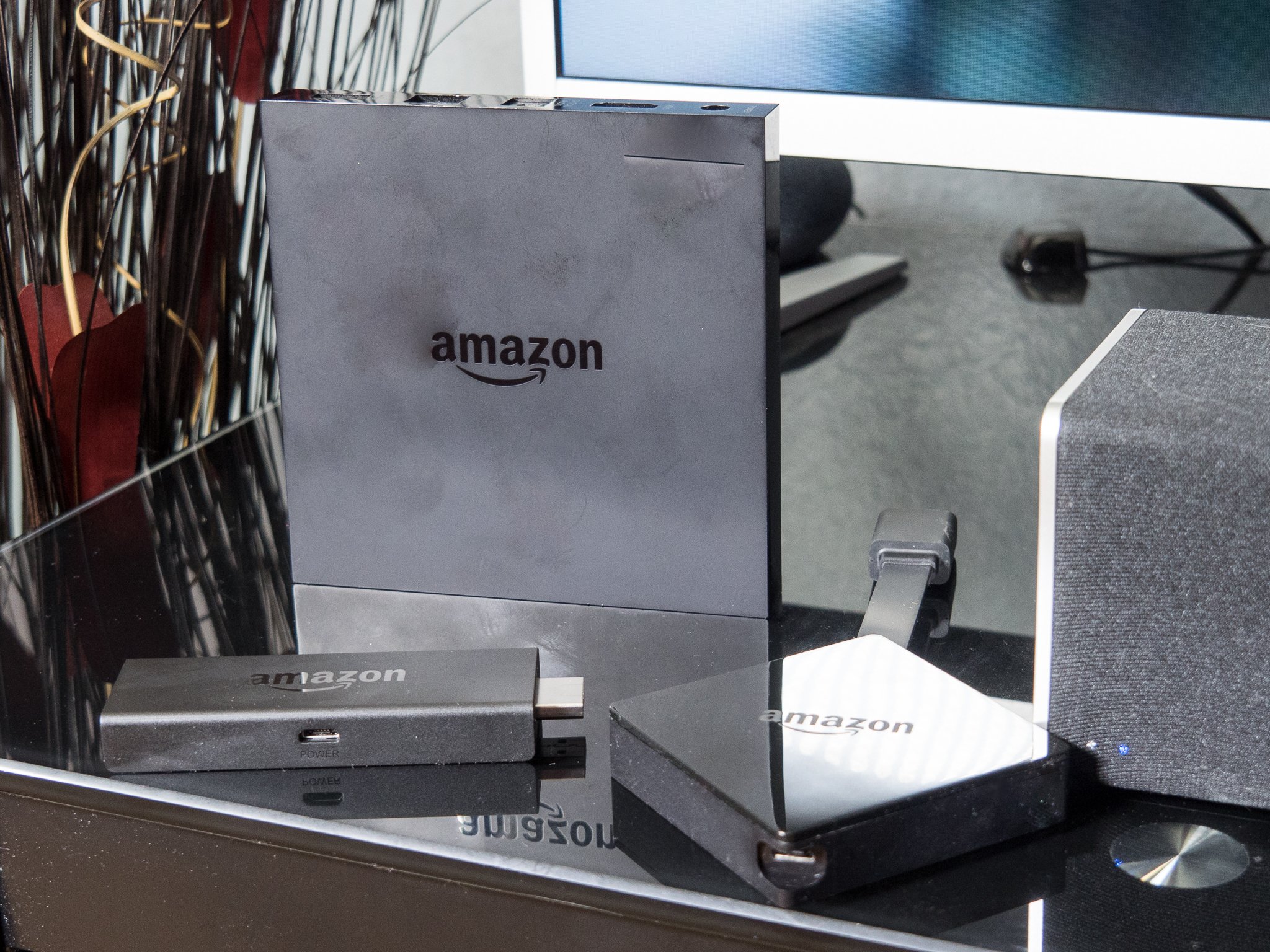
If you need an Ethernet adapter
One last thing here. I would recommend seriously considering Amazon's $15 Ethernet connector. Remember that a hardwired connection is one of the things you lose with the new Fire TV dongle. And while every network is different, and speed tests can vary by server, I'm seeing a 3x improvement in speeds in my wired Apple TV 4K than in the Fire TV over my Wi-Fi.
Should that be a deal-breaker for you? I can't answer that. And an $85 streaming box is still about $100 less than an Apple TV or NVIDIA Shield TV, which are the other boxes I'd recommend without hesitation.
An Ethernet adapter for a dongle is clunky, but for some it might also be a necessity.
